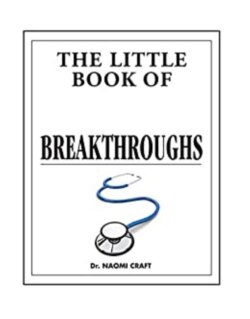Читать книгу The Little Book of Medical Breakthroughs - Dr. Naomi Craft - Страница 26
На сайте Литреса книга снята с продажи.
1842 USA General Anaesthetic William E. Clarke (1818–1878)
ОглавлениеBefore the discovery of general anaesthetics, patients endured unimaginable agony in surgery.
Until the 1840s patients often had to be held down by several assistants before they passed out. Many died on the table during surgery, while those that survived were severely traumatized by the experience.
Charles Darwin (1809–1882) commented on this in his autobiography:
I also attended on two occasions the operating theatre in the hospital at Edinburgh, and saw two very bad operations, one on a child, but I rushed away before they were completed. Nor did I ever attend again, for hardly any inducement would have been strong enough to make me do so; this being long before the blessed days of chloroform. The two cases fairly haunted me for many a long year.
For centuries doctors had used opium and alcohol to try to reduce the pain of surgery. Other treatments included hyoscyamine, which was similar to opium, and mandrake, which was famously used to send Juliet into a reversible coma in William Shakespeare’s (1564–1616) play Romeo and Juliet. But none could completely dull the pain and surgery remained an excruciating and dangerous last resort.
Things began to change in 1795 when the British chemist Humphrey Davy (1778–1829) discovered that nitrous oxide, when mixed with oxygen, could produce pain relief and reversible unconsciousness. Although Davy realized the implications of his discovery for surgery, his theory was not tested until years later, when it began to be used more widely as pain relief during labour in the 20th century. Nitrous oxide was known as ‘laughing gas’, because inhaling it made people giggly and relaxed, making it more popular in funfairs than in doctors’ surgeries.
In the 1840s, American doctors and dentists started using ether to anaesthetize patients before extracting their teeth. Ether had been discovered in 1275 by Spanish chemist Raymundus Lullius (c.1232–1315), and was originally called ‘sweet oil of vitriol’ before being renamed ether in 1730. The first to use it was William E. Clarke (1818–1878), a chemist and doctor from New York. He carried out a tooth extraction in 1842 using ether and his success inspired Crawford Long (1815–1878), a country doctor in Georgia, to remove a neck cyst using ether the same year.
Confidence grew, and the news of ether’s success spread to Europe. Rapidly it became standard practice to anaesthetize the patient with ether prior to surgery.
However, ether tended to make patients cough and vomit. In the United Kingdom it was soon replaced by chloroform, which had first been discovered in 1831, but only grew in popularity as an anaesthetic in the late 1840s. In 1853 the British queen Victoria (1819–1901) used chloroform during the birth of her son Prince Leopold (1853–1884). She records in her journal that: The effect was soothing, quieting and delightful beyond measure.
